Opinion & Analysis
2023 PGA Championship Betting Tips: Why Brooks Koepka is primed to win his fifth major
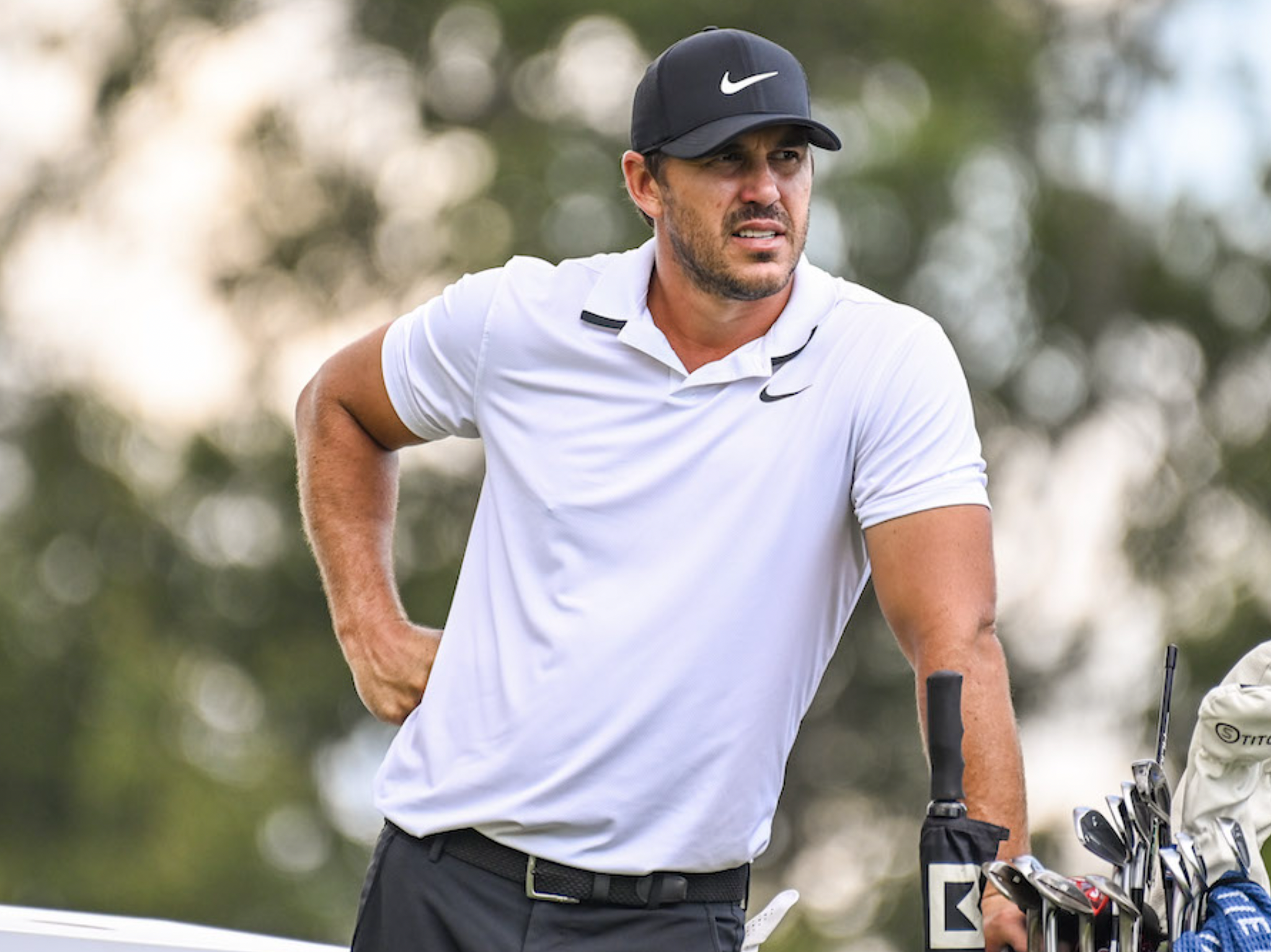
For a while, many considered the USPGA to be ‘bolt on’ major, considered the fourth in ranking, behind the Masters, US Open and The Open Championship.
Despite the roll-call of winners containing the greats (Nicklaus and Woods leading many of the world’s best) the move to May has given the event that boost in profile, coming half-a-dozen weeks after Augusta, and a month before the US Open, itself just a few weeks ahead of The Open.
It remains a bizarre thing to me we are done with the four premier events by the end of July – the tennis Grand Slams run from January to August – and I’m certain we’d have a lot more fun splitting them up down the calendar and in very differing conditions, but the promotion of the FedEx Cup, Ryder Cup years and pressure on broadcasters has led us this way.
Considering the small sample of recent winners since the move, all of defending champion, Justin Thomas, Phil Mickelson, Collin Morikawa and Brooks Koepka have proven to be elite players. Koepka won the 2017 US Open as the first of four majors, Lefty was winning his sixth major, Morikawa subsequently won The Open a year later while JT won his second major, six years after landing the Wannamaker Trophy in 2017.
There will be plenty of content written about the course, so let’s keep it simple.
After this year’s championship, Oak Hill will be the most-employed course in PGA/US Open history. Changes have been made throughout the years though, with golf.com saying, “The Oak Hill where Snead cashed in big in 1941 was not the same Oak Hill of 1968, where Lee Trevino claimed the U.S. Open, which was not the same Oak Hill of 1980, where Jack Nicklaus ran away with the PGA.”
A revised Donald Ross course, think long short holes, followed by (modernised) long, long holes, sloping greens, and ultimately a choice for the player – try the tough tee shot fraught with danger, or a simplified but shorter route – the lengthening to a 7400-yard par-70 has to favour those that either bomb it off the tee, or are full of quality with their long iron approaches.
The front nine looks to be very much a defending half with a 503-yard par-4, 615-yard par-5 and tough narrowing, closing hole at 480-yard-plus. If they’ve survived the outward half, the course tempts players with the 430-yard 10th, sub-400-yard 12th, par-5 13th, driveable 14th and, 155-yard par-3 15th.
Given the winning scores here of 10-under (Jason Dufner 2013), 4-under (Shaun Micheel 2003) and 6-under by Jack Nicklaus in 1980, as well as the last four PGA Championships (averaging around 6-under for the three May events), this could be a grind.
Sure, driving looks vital, but I’d take a look at total driving with distance an advantage, although, as always, a current strong tee-to-green game with leanings to long irons, looks key.
Given everything said, being one of the elite – or having pretensions to being so – is requisite to winning this grind. Of the last 10 winners, only Mickelson was ranked outside the top-50, with 2018 champ, Jimmy Walker, out of the worlds top 25.
Looking at the top of the market, the results when selecting players with history on par-70 courses of 7300-yard and longer sees Scottie Scheffler with an impressive pair of runner-up finishes, and a worst of 32nd in seven starts. There is no victory, though, which puts him behind the likes of his rival for the number one slot, Jon Rahm, with a win at Olympia Fields and East Lake (Ross design).
Rory McIlroy has an enviable record of three wins at East Lake and a win at Firestone amongst his impressive collection at this range, but he went missing at Augusta and actually looked even worse at Quail Hollow, despite at least making the cut.
Cases are obviously made for the likes of Thomas and Hovland as well and there is no arguing with those that opt for either but I’ve got a funny feeling this might be the day when golf goes a bit crackers.
LIV intruder Brooks Koepka was put off by some adverse commentary during the lead up to the Masters, and again by the pace of play during the final round, but he has that victory at Shinnecock Hills and is a twice two-stroke winner of this event. The Norman-led tour doesn’t have anything like a grind on its menu but the 33-year-old is made for this, with a majors record that reads 35 outings, four wins, four times runner-up, five further top-fives, and four top-10 finishes.
Just before the start of last week’s LIV Tulsa, he spoke to the media.
“Yeah, this week just trying to make sure I tune everything up, get ready for next week. I like the majors. I like the discipline, the mental grind that comes with it all, the focus, and just use this week to get ready.
“That’s a huge thing. I’ve always done it. It’s not always about results the week before, but it’s about making sure that everything is starting to line up and I can see the progress and see where we’re going to be for next week.”
Examining the criteria set for all the players in the top-12 or so of the market, Koepka has the victories at the 7400-yard-plus Shinnecock and 7300-yard Bellerive alongside top five finishes at Baltusrol (2016 PGA), as well as multiple top six finishes at East Lake and Firestone, and has been top five in his only start at the Houston Open (weekend rounds of 65 twice).
Having just announced that he and wife, Jena, are expecting their first child, there is every motivation to put up a solid showing around a course that suits the former world number one in every way.
This event often throws up first-time major winners, and Tony Finau would seem the perfect candidate for another.
Whilst the 33-year-old has not shone in the two PGA’s of this length, that’s more of a surprise than expectation, and of course, both events were before an extraordinary turn of form and confidence that has seen the hugely-likeable big fella win five events in 45 outings.
Amongst those wins, he beat a top-class field at the 2021 Northern Trust (7300-yard par-72) that included the subsequent major winners Cam Smith and Jon Rahm, with two-time PGA champ Justin Thomas five shots off the pace in fourth.
2022 saw three wins, gagging up when back-to-back winner at the 3M and Rocket Mortgage Classic (Ross design) before waltzing clear at the 7400-yard-plus of Memorial Park, Houston.
In between all that, he flew at the end of the Canadian Open to be beaten only by Rory McIlroy, and at the Mexico Open to get bested by Jon Rahm, a defeat he avenged when holding off the world number one at the end of April.
Fifth to Koepka at Shinnecock, he filled the same position behind Rahm at Olympia Fields in 2020 and flew through the field over the weekend at last season’s finale at East Lake.
Tour-tips’ three-month tracker puts Finau in at #7 in the all-round listings, ranking him 17th in total driving, 14th ball-strking, 24th for greens in regulation, 24th scrambling and 31st for putting average. With some severe pressure on par-4 play this week, he ranks in eighth for that discpline and 13th for the longer holes.
In eight tries at this championship, his best run is since moving to this earlier slot (4/8/30 last three years), he’s a different player to the one pre-2020, and he can exploit an elite tee-to-green game, an attribute for which he ranks third over the 2022/23 season so far.
Given a history of injury concerns, it could have been foolish to put up Hideki Matsuyama on Twitter over the weekend, but I’m buoyed by his play over the weekend at the Byron Nelson, recording a combined nine-under for his first two rounds and ranking in the top echelons for approach shots on all four days.
2022 wasn’t great for the 2021 Masters champion, having to withdraw from The Players, Texas Open, 3M, St.Jude and Houston, but, when right, still managed a win at the Sony, and record a closing third at the Byron Nelson, another flying finish at the difficult US Open at Brookline (winner Matt Fitzpatrick at 6-under), and a top-10 at East Lake, where a third-round 63 equalled winner McIlroy, Thomas and Rahm for low round of the week.
2023 has been a year of steady improvement, with his two top-10 finishes (at Torrey Pines and Sawgrass) overlooking that he was ninth after three rounds of the opener in Hawaii, 12th after three rounds in Texas and in fifth place going into the final round at Augusta.
Possibly still carrying the niggle he discussed after his second round, Deki just lacked that confidence to attack on Moving Day last week, when everything stalled after a missed birdie opportunity at the gettable ninth. It was good to see him get revenge on that hole plus four others for a ** under final round and momentum heading onto this week.
The last few weeks have been nothing but an encouraging sign as he bids to add a good finish to his 10/10 cuts at the PGA in all its formats and perhaps relevant, Deki has some experience of Oak Hill when top-20 in 2013, and boasts some low rounds throughout his career at the Ross-designed Sedgefield, home of the Wyndham Championship (form of 3/11/15).
Whilst not the longest driver, the Japanese star struck a final round 61 to win at Firestone in 2017, has three top 10s at East Lake, and a tied-second alongside Dustin Johnson at the 2020 Houston Open, where a weekend 66/63 brought him through from 26th at halfway.
Approach stats for Craig Ranch last week saw him rank sixth, 25th, 23rd and ** for the four rounds, leading to a high status for greens-in-reg. He may need to turn up with more gusto in his driver, but as long as he is fit, there is a percentage there in his locker, something he can easily work with.
Should this get nasty, there are a handful of players that should come to the fore.
Jordan Spieth seems obvious in single-figure winning tournaments, except from his Ross form (one runner-up and 17th at Pinehurst from seven starts). That isn’t the be-all-and-end-all for a player that is a three-time major winner, and coming off a fantastic run of form, but, having pulled out of the Byron Nelson with a wrist injury, I’m looking for clues that all is okay, before piling in for The Open at Royal Liverpool in July.
Justin Rose is a tempter for a high finish after his first win for four years at Bay Hill in February, and he can make up for Lee Westwood’s failure to exploit his good overnight position back in 2013.
It wasn’t the greatest of events, but he won easily and confirmed the promise he showed when ninth at Houston at the end of ’22 (third after three rounds) and when top-20 at Torrey Pines a week before the victory.
The experienced Englishman, who beat Phil Mickelson in a duel at the US Open at the ridiculously tough Merrion, certainly has the game to keep pounding away for par, and proved he has still got the game to compete with the elite when inside the final 10 players after three rounds at the Masters and, most recently, when in second place at halfway at the ‘elevated’ RBC Heritage.
A two-time runner-up at the Masters, Rose is also a 16-time a top-10 major player, with wins at the AT+T/Quickens Loans, Memorial and Torrey Pines to remind us just where he sits amongst the hierarchy.
The 42-year-old now sits at the highest ranking (low 30s) for over four years and it doesn’t take a long memory to remember that a 50-year-old Phil Mickelson won this event just two years ago. I’ll take the chance it’s tough enough out there for Rosey (yeah, I know, Butch, eh?) to land a decent payout on the specials.
Fellow Englishman Tyrrell Hatton is a real head-scratcher as he seems to hate everything, but is blinkin’ top class at this golf lark. He’s recently recorded a fourth place behind Rose at Bay Hill, runner-up at Sawgrass, top-20n at Harbour Town, third at Quail Hollow, all topped with last weekend’s *** at the Byron Nelson, a course that should not have fitted his grinding style of play.
Such was his play at Craig Ranch that he ranked **** ***** and he comes here carrying USPGA form of eight runs, two top-10 finishes and a most recent 13th at Southern Hills, dropping slightly from a halfway position of 10th.
The 31-year-old doesn’t ‘do’ Ross very frequently, but in four outings has a top-10 at Sedgefield and, perhaps more importantly, a top five in Detroit, the latter coming after a run of a win (Bay Hill) and third (lead after three rounds) at Harbour Town. He is absolutely the grinder amongst grinders.
In the end, yesterday’s finish might have just ruined his price, but (since 2006) and apart from Mickelson in 2021, every champion has finished in the top-28 in their event immediately before this major, with seven inside the top five and 11 inside the top-15.
We may need a pair of hardy players come Sunday afternoon, and in Rose and Hatton, we get just that.
Americans have won the last eight PGA Championships, and whilst it’s not hard to see young bucks Taylor Montgomery or Cameron Young getting involved, I’ll turn to 2019 US Open champion Gary Woodland to revive former glories after showing a return to top form over the last 18 months or so.
The form of that victory needs no explanation, beating Koepka, Rose, Rahm and Xander Schauffele by three and six shots, with McIlroy and Stenson further behind. That was to be the highlight of the now 38-year-old’s long career, one that started 16 years ago and containing a next-best major finish of sixth place at Bellerive, a 7316-yard par-70 and home of the 2018 PGA Championship.
Indeed, looking at the Florida resident’s card, all of Woodland’s best major finishes have been within the last five years. Apart from the two efforts mentioned above, he has a fast-finishing eighth place finish at brutal Bethpage Black in 2019 and a back-door 10th at last year’s US Open, all signs that he’ll stick around should it get tough out there for the more finesse style of player.
2022 saw Woodland record top-five finishes at the Honda and at Bay Hill, whilst top-10 finishes at the Texas Open, afore-mentioned US Open and Houston all provide evidence for the wager.
Following a slow start to this year, Woodland found form at Riviera, where he was fifth after three rounds, before a recent run of six cuts that include a 14th place finish at Augusta and at Quail Hollow, where ironically he sat in ninth place going into Payday.
On the three-month tracker, Woodland ranks inside the top 35 over the last three months, based on his high position of fifth for total driving (in eighth for the season overall) 11th for greens-in-regulation and top-35 for both the par-fours and fives. The official season-long PGA Tour stats see him top-25 for tee-to-green, with highlights being top-10 rankings for approaches from sub 100-yards, 150-175 yards and 200+ yards, the latter surely an advantage on this monster.
It’s all not quite good enough to see him lifting the trophy on Sunday, but there is plenty there to think he’ll give a run for a place on the front page, or at worst inside the top-20.
Recommended Bets:
Outright
- Brooks Koepka – Each-Way
- Tony Finau – Each-Way
- Hideki Matsuyama – Each-Way
- Tyrrell Hatton – Each-Way
- Justin Rose – Each- Way
Specials
- Justin Rose – Top Englishman
- Tyrrell Hatton – Top Englishman
- Justin Rose – Top-20
- Gary Woodland – Top-10
- Gary Woodland – Top-20
- LIKE2
- LEGIT1
- WOW0
- LOL0
- IDHT0
- FLOP0
- OB0
- SHANK4
Opinion & Analysis
The Wedge Guy: What is a “wedge” anyway?
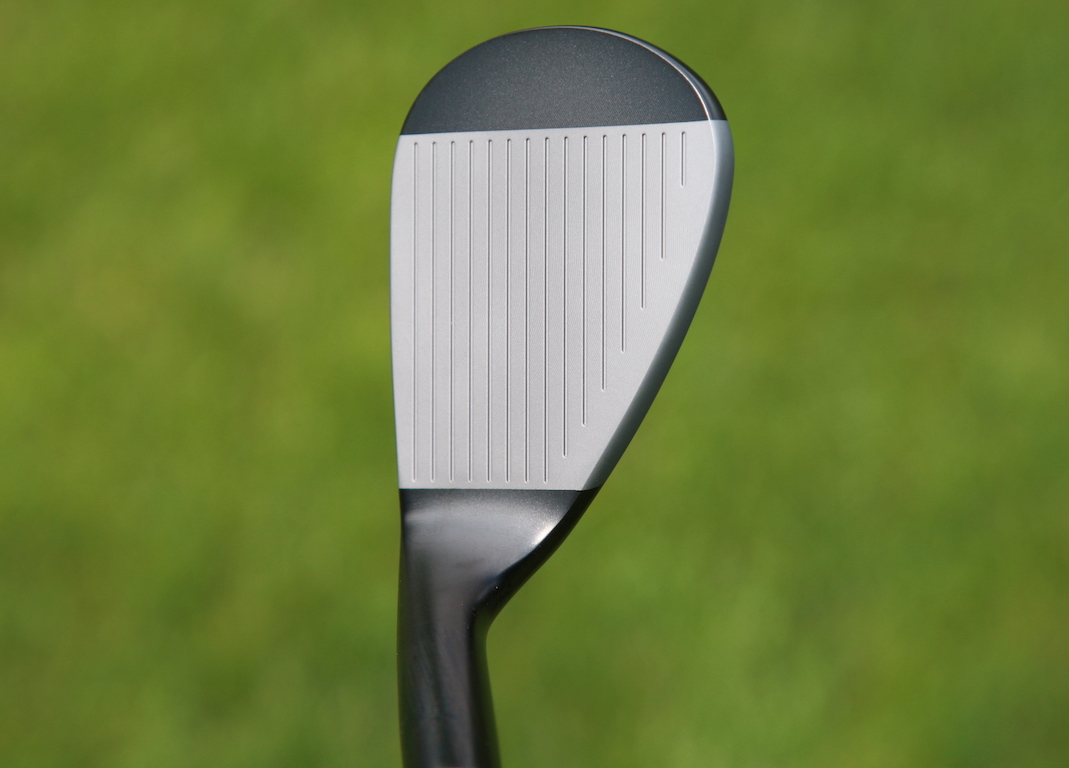
This week’s post is somewhat of a continuation of the recent path we’ve been on, discussing the nuances of those high-loft clubs at the short end of our sets – those specialty clubs we call “wedges.” The real question might be:
“What is a ‘wedge’ anyway?”
Can that name be given to any iron-type club simply based on its loft? And if that’s the defining criteria, where do “wedge” lofts begin? And can clubs of all different design configurations still all be “wedges” just because they fall into that arbitrary range of lofts?
To the first question, my historical research indicates the term “wedge” first came into common use in the 1930s with the invention of the original sand wedge, generally credited to Gene Sarazen. As the legend goes, after flying with Howard Hughes and observing the use of flaps to make the airplane go up or down, he conceived the idea of a downward angle on the sole of a niblick to make it “reject” from the sand. So, after numerous prototypes and testing, the club that came to be known as the “sand wedge” was born.
Those clubs were about 55-56 degrees of loft, and quickly became widely adopted because of this revolutionary performance from bunkers. My guess is the term “wedge” was applied to that club because that’s exactly how you used it – you “wedged” the club between the ball and the turf – loft made the ball go up and the sole made the club “bounce” off the turf.
The professionals of the 1940s and 1950s began to use their sand wedge for more specialty shots around the greens, but most often relied on their highest lofted iron for most routine pitch shots. In sets back then, that club had 50-52 degrees of loft and was often called a “pitching wedge,” but some labeled it simply a “10-iron,” or in Ben Hogan’s case, the Equalizer.
But that club looked like the irons it matched, bearing little resemblance to the specialty “sand wedge” with its big flange and heavy sole, but I really don’t know why it was also called a “wedge.”
As iron lofts began to strengthen in the 1980s, the need for a “gap wedge” came about, as that valuable 50- to 52-degree iron was disappearing. Then at the other end of the set, the “lob wedge” appeared. Both of those clubs bore some resemblance to the sand wedge because they were most often presented as loft extensions in manufacturers’ wedge product lines.
So, now let’s fast-forward to 2023. Most iron sets have a “P-club” of rarely more than 45 degrees, and we’re seeing more and more with as low as 42 degrees of loft. Many of the iron models offer set-matching “wedges” labeled “A”, “G”, “S”, etc. to extend the iron design up into the higher lofts. These all look almost identical to the 6-iron in that set, because this industry is still caught up in the notion of “matched” sets. (But that’s a topic for another day)
In the “wedge” category, product lines can be confusingly broad, with lofts from 46 to 64 degrees and all kinds of specialized sole configurations. So, back to the original question — what is a “wedge?”
Think about it this way.
At the long end of your set, the club with 22 to 24 degrees of loft might be configured as a fairway wood, or a hybrid, or a hollow high-tech “driving iron,” or simply the 4- or 5-iron that matches your irons. Each golfer can determine which configuration serves him or her best at that loft and the distance it produces.
Likewise, the clubs at the higher loft end of your set might look like your 6-iron, or might look like a traditional wedge, or might look like one of the numerous specialty wedges with a wider sole. My “wedge” designs for Edison Golf don’t really look like any of those.
But just like those options you have to build out the long end of your set, each of those various ways to configure a higher-lofted club will produce different results. So, can we really lump all of these high-loft options into a singular category and call all of them “wedges?”
Or is it time to come up with a totally different word to describe those high-loft clubs in our bags that have the assigned task of delivering consistent results at a range of distances as we get closer to the green?
I’m not sure I have the answer, but it should be fun for all of us to stop and ponder the question? Your thoughts, everyone?
- LIKE17
- LEGIT6
- WOW0
- LOL0
- IDHT0
- FLOP0
- OB0
- SHANK4
Opinion & Analysis
The best bets for the 2023 John Deere Classic

Probably not quite the ‘classic’ of its name, but the John Deere provides some recall of the good and bad of golf betting.
Back in 2013, a young Jordan Spieth made his reputation by sinking a 72nd hole bunker shot to put the willies up course specialist and lumpy bet Zach Johnson. As is the way, the Deere Run guru then bogied his final hole, going on to defeat in a three man play-off.
Fast-forward nine years and J.T Poston landed a confident wager in last year’s event, leading all the way to land a comfortable three shot victory. Can’t wait to see which way it goes this time.
Expect birdies galore around the course this week, with very little difficulty in finding fairways.
With most of the field managing to hit the large greens, GIR stats are less worthy than they might otherwise be. Instead, players need to hit it close enough so they make the majority of putts. As with previous winners Bryson DeChambeau and Lucas Glover (to name just two), high-class ball-strikers can give themselves enough chances to land their share of birdies.
Current form looks a must here this week, with cross-over form from Travelers including Spieth, DeChambeau, Daniel Berger and Brian Harman, and Rocket Mortgage champions Cameron Davis and DeChambeau showing up well at this week’s venue, all recording a similar winning score.
When the market opened, I felt Emiliano Grillo would be third or fourth favourite, so finding him at a bigger price than PGA maidens Denny McCarthy, Adam Schenk and new star on the block Ludvig Aberg was a pleasant surprise.
The three names seem to have more improvement in them than the 30-year-old Argentine, but none have the victories, or the course form, to justify being ahead in the market.
McCarthy has lifted his reputation even further with his play-off loss at Muirfield and leading to halfway at River Highlands, but he faded away when under the cosh here last year, allowing the experienced Grillo to be the closest challenger to Poston (alongside Chritiaan Bezhuidenhout), whilst the 23-year-old Aberg may well be the Second Coming but faded away late on at both River Highlands and Detroit, recording large minus figures for his iron play. Sub 25-1? Really.
Schenk makes a lot of sense on recent form, with iron play making up the most of his impressive tee-to-green stats, but at anything over 25/1 in a weak field, the Charles Schwab winner appeals more than anyone.
Grillo ranks 3rd on tour-tips overall ranking for this event, with half-a-dozen instances of top-25 tee-to-green play in his last eight starts. In the same period (since Bay Hill) the Argentine has listed in the top 12 for approach play on five occasions, leading the field at the Arnold Palmer and ranking 12th at Travelers.
The 15th place at River Highlands on his last outing is the best finish there since 2018 (19th) after which Grillo suffered a slump, falling down the world rankings from 47th to 156th during 2020.
2021 saw him come back with a runner-up behind Stewart Cink at Harbour Town, following up a year later when matching his second place here with a silver medal behind a rampant Tony Finau at the 3M.
Grillo was trending in the right direction before his play-off win at Colonial, with form figures of 7/5/23 and an unconcerning missed-cut at the PGA, and the win, from a nervous Schenk, and the world number one Scottie Scheffler, reads very nicely in this field.
Whilst never the greatest putter in the world, that aspect has improved greatly. Now ranking in 6th for putting average off a large number of greens hit, he has positive figures at five of his last seven starts and comes here recalling last season’s +8.5 strokes tee-to-green and +4 strokes for the flat stick.
Doug Ghim is playing nice golf at the moment, several years after being touted as a superstar.
This test suits the short-hitting but accurate player, and with form figures of 33/15/12/19/27, he’s the type to appeal as a solid top-20 bet.
For win purposes though, I’ll revisit a Grillo formline and row in with the man that lost to the selection by just one shot at the Web.com Tour Championship some eight years ago, Chez Reavie.
I put up the 41-year-old a couple of weeks ago at a monster 200/1 to regain his 2019 Travelers crown, and he gave us a thrill until fading away on Sunday, yet still paying out a healthy return for a place.
A 2021 finish of 18th and a previous pair of top-15 finishes led to him going off around 50/1 for this event 12 months ago, and I’m not sure he’s done anything, or faces tough enough opposition, to be 10 points longer.
Previous to his latest win at the Barracuda in July last year, the three-time winner posted 27th at Colonial and 8th at River Highlands. This time, he comes here after being 12thg at the halfway stage of the Charles Schwab and in second place after three rounds in Connecticut.
Now, with six consecutive cuts made and four of his last eight rounds in the low-to-mid-60s, he arrives after recording an average of between 5.5 and 6.0 strokes for approaches and tee-to-green, a repeat of which will see him bang there come Sunday evening.
With River Highlands and Deere Run form in abundance, he’s yet another old campaigner I feel will prove too much for the young guns.
Finally, we’ll go with a pair of three-figure pokes, firstly in the way of David Lipsky, a player with two wins on the European Tour at tracks that require a touch of guile over strength.
It may be five years since the 34-year-old worked his way around Leopard Creek to back up his Crans victory, but his career has not been devoid of highlights, including a four shot victory over Taylor Pendrith at the short San Antonio course in Texas.
2021 saw him record six top-10 finishes, including at Abu Dhabi and Valderrama, whilst a year later he finished top-10 at the Corales and better-class Mexico Open behine Jon Rahm and Tony Finau.
A season-opening top-five at the Sony promised much and, whilst it hasn’t gone that well, Lipsky can still boast top-20 finishes at the Charles Schwab and Memorial, where at halfway he was first and sixth respectively.
Always around 24th place last season, Lipsky has shown he can raise his game at a lower level, whilst two of his three victories have come in 25-under and 18-under. He can do a job when conditions suit, and at 125/1, he’ll do as a chance to gain some decent each-way money.
Next to him at 125s is 26-year-old rookie Carl Yuan, now finding his feet at this level yet massive amounts of points bigger than some of his more sexy rivals.
A winner on his home tour, he had a remarkable 2022, winning in Louisiana, and racking up a further four top-five and four top-10 finishes and getting himself in at the highest level a year after he was due.
Explaining why he missed promotion 12 months earlier, Yuan said it was every player’s dream to represent their country, so popped off to The Olympics rather than guarantee his PGA card through the final six events of 2021.
Still, he’s here now and, after a slow start, made three consecutive cuts – Houston, RSM and Sony – before another lull from mid-January.
Shaking that off, he bounced back to form with the halfway lead at the better-class Canadian Open, stating, “That’s my goal [retaining his card] coming into the week. That’s my No. 1 goal. Not a result goal, just like being in the present, hitting shot by shot and, yeah, being out here trying to have the most fun. All of it.”
It seems to be working as he finished a highly respectable 18th before landing another top-20 at Detroit last week after a third-round 64 had gotten him inside the top-10 going into payday.
This massive hitter will be able to club down for most of this week’s test, ensuring he builds on some steady seasonal figures for tee-to-green and with untold improvement to come.
There is a chance he needs a much bigger environment to thrive, but as an unexposed, potentially high-class improving recruit, he needs taking a chance with.
Recommended Bets:
- Emiliano Grillo
- Chez Reavie
- David Lipsky
- Carl Yuan
- LIKE1
- LEGIT0
- WOW1
- LOL0
- IDHT0
- FLOP0
- OB0
- SHANK0
Opinion & Analysis
The Wedge Guy: The case against set-match wedges
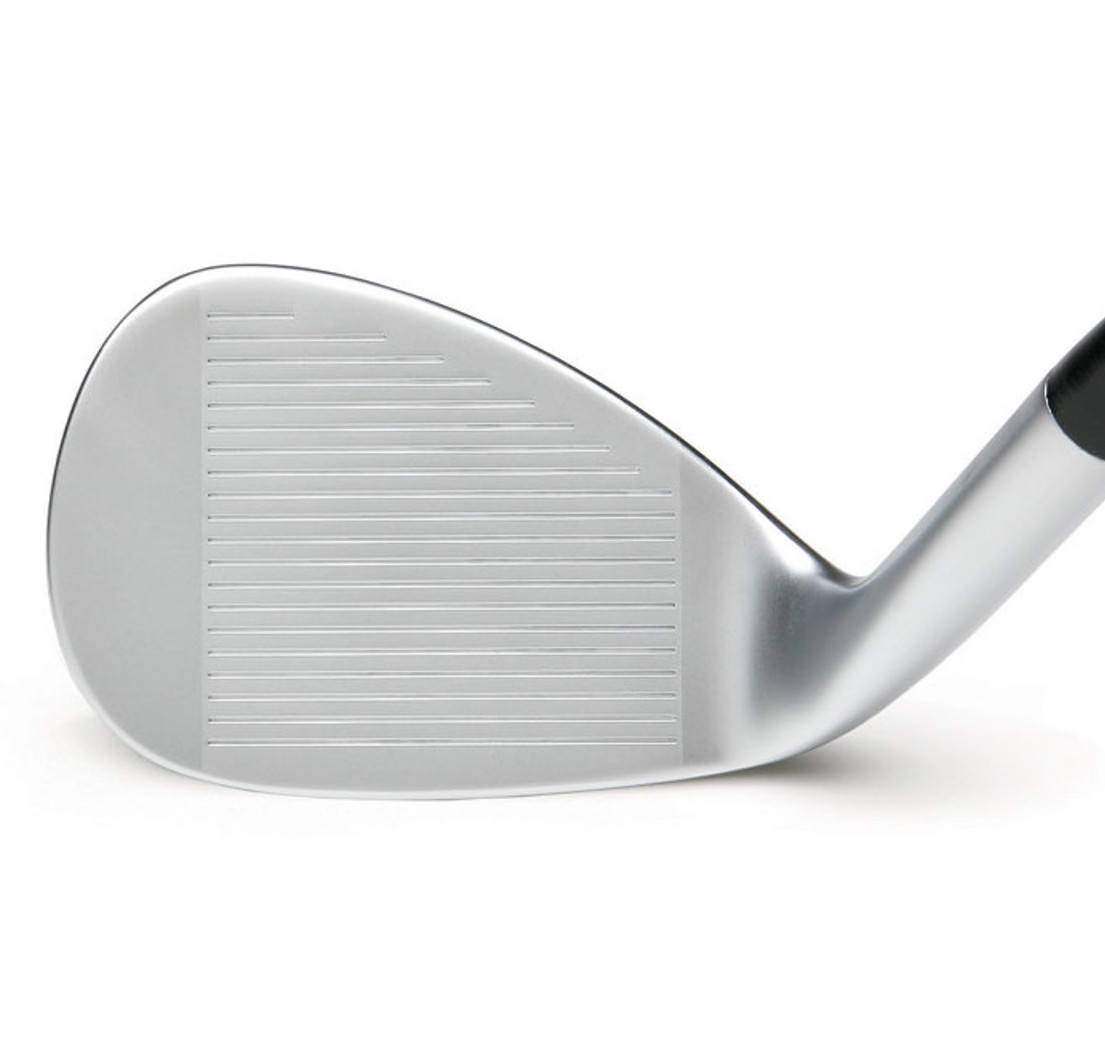
One side-effect of the relentless effort by major iron makers to win the “launch monitor wars” that pit one 6- or 7-iron against another is that the lofts throughout sets of irons have been continually strengthened to a point of what I consider ridiculousness. There are two major problems with this trend in specifications for sets of irons. The first is that to try to win the “launch monitor wars,” iron makers have to try to make their 6- and 7-irons go farther than the other guys’. That means making those mid-irons stronger in loft and using a bit of “trickery” by increasing the loft gapping between your higher-loft scoring clubs so that your “P-club” doesn’t get too strong, too (though modern “P-clubs” of 43-45 degrees of loft are really not “pitching wedges” at all).
Historically, iron lofts progressed through the set at four-degree loft intervals, and .5-inch length differentials. This wasn’t happenstance at all, it was the result of rigorous testing by professionals and average golfers. Those technical differences typically delivered consistent distance gapping from the pitching wedge down through the set.
A review of the specifications of almost every set of irons on the market today, however, will reveal that loft differentials are now five degrees between the short irons and as little as two degrees at the long end of the set. This is totally counter-intuitive to how you can improve your short iron and wedge precision. Why in the world would you want to increase the distance differences between your shorter irons, which is where you most need distance control precision? After all, a 6-iron shot that is 25 to 30 feet long or short is pretty darn good, but it sucks if you have a 9-iron or wedge in your hands.
Understand that the “holy grail” of distance in golf club design is the combination of high launch and low spin. Achieving this is relatively simple – put as much mass in the bottom of the golf clubhead as possible.
So, the second major problem caused by the “launch monitor wars” is how modern irons are designed. The early “solution” to longer-hitting mid-irons was extreme sole-weighting with thinner faces. The newer technologies we’re seeing in irons combine even faster faces with heavy tungsten inserts in the sole of the club.
But the problem with almost all irons on the market – especially in the “game improvement” category – is that this same design and technologies are applied throughout the “matched” set of irons and even into “wedges” that display that same design concept. And that’s where your prime scoring clubs are being compromised.
High launch and low spin are great in a driver or fairway wood, and maybe even desirable in your middle irons — but that is the exact opposite of what you need to achieve consistent distance precision in prime scoring range when you have a short iron or wedge in your hands.
Almost all accomplished players have learned to hit their short irons and wedges with a penetrating ball flight and lots of spin to stop the ball in its tracks once it hits the green. So why would you ever want to play short irons and wedges that have all their mass at the bottom, which is designed to deliver the exact opposite of what you should be seeking?
Now, let’s go back to the title of today’s post.
Either your 6- or 7-iron is 28 to 30 degrees of loft – but have you ever stopped to think that this loft is closer to that of your driver than to where your “wedge” lofts begin (around 45 degrees)? I feel certain that no golfer in the history of the world has ever proclaimed
“I really like my 7-iron. Can you make me a driver that looks just like it?”
In fact, from your 7-iron down to your driver, you likely have at least four, if not five, completely different clubhead designs in order to optimize performance at a given range of lofts. That iron design might evolve to a driving iron design a few degrees lower, then most likely to a hybrid design a few degrees lower than that, then to a fairway wood as lofts get below twenty degrees, and finally to a driver at 9 to 12 degrees.
So, if it takes four to five completely different clubhead designs to optimize performance at the long end of the set, how realistic is it that only one design throughout your set of irons can deliver the performance and precision you need at the short end?
I’ve always believed that every club in your bag has a specific purpose and expectation. Fairway woods, hybrids, and long irons are to get you close to or maybe even on the green from a long-distance approach. With middle irons (5 through 7 or 8), your goal is to get on the green within a reasonable distance, or certainly not to leave yourself a tough greenside save.
Your “money clubs” are those with lofts above 37 to 40 degrees, as this is where you have a chance to get close enough for the occasional one-putt, whether that is for a birdie, par, or bogey. And this is the end of your set where you likely have not spent the time to make sure it’s just right.
To accent just how important this part of your set really is, did you know (if you discount the fact that almost all so-called par-5 holes on the tour are really just long par 4s for those guys) the entire PGA Tour is over par outside 9-iron range?
Something to think about, for sure.
- LIKE59
- LEGIT18
- WOW4
- LOL2
- IDHT0
- FLOP4
- OB0
- SHANK3
-

 19th Hole2 weeks ago
19th Hole2 weeks agoTiger Woods delivered stinging message to major winner after denying him lift on private jet
-
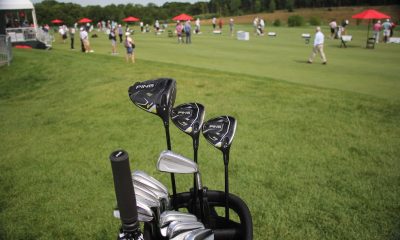
 Whats in the Bag2 weeks ago
Whats in the Bag2 weeks agoSeamus Power WITB 2023 (June)
-

 Whats in the Bag3 weeks ago
Whats in the Bag3 weeks agoOmar Morales WITB 2023 (June)
-

 Whats in the Bag3 weeks ago
Whats in the Bag3 weeks agoBlayne Barber WITB 2023 (June)
-

 Whats in the Bag3 weeks ago
Whats in the Bag3 weeks agoBen Carr WITB 2023 (June)
-
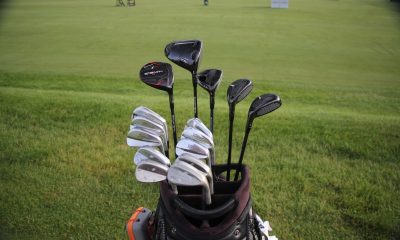
 Whats in the Bag2 weeks ago
Whats in the Bag2 weeks agoTom Hoge WITB 2023 (June)
-

 19th Hole3 weeks ago
19th Hole3 weeks agoJournalist alleges this is the ‘unforgivable’ act Phil Mickelson committed against Pat Perez and his wife
-
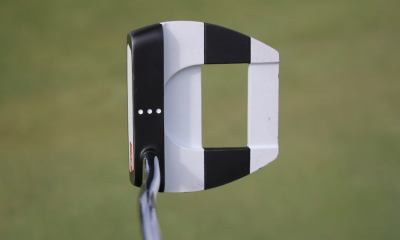
 News2 weeks ago
News2 weeks agoKeegan Bradley’s winning WITB: 2023 Travelers Championship













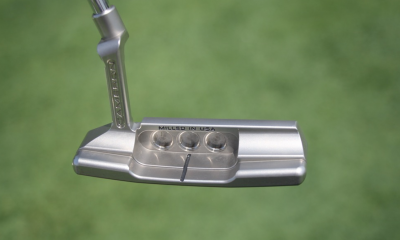







Pingback: Why Brooks Koepka is primed to win his fifth major – GolfWRX – G20 BET